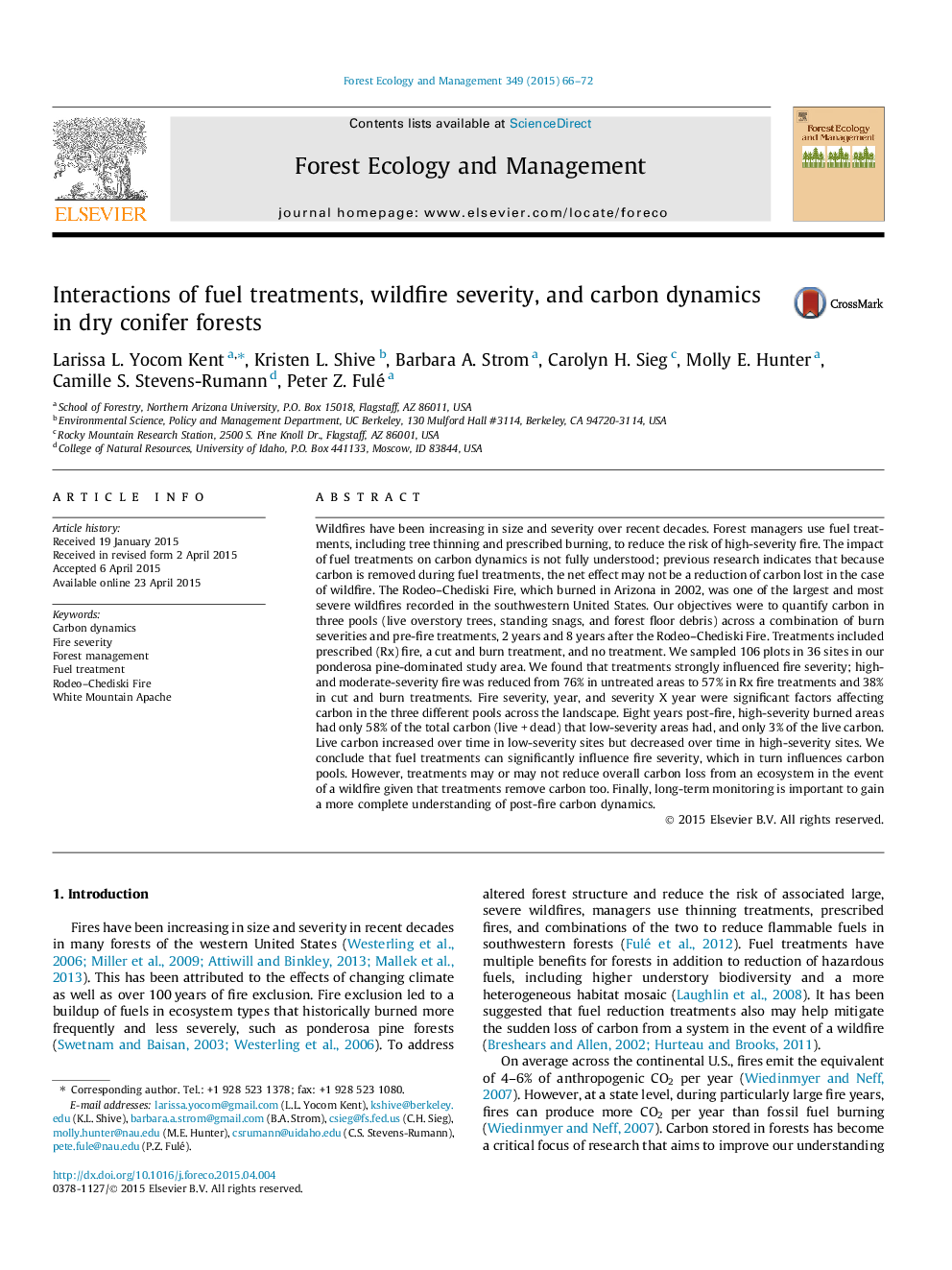| Article ID | Journal | Published Year | Pages | File Type |
|---|---|---|---|---|
| 86272 | Forest Ecology and Management | 2015 | 7 Pages |
•High-severity fire burned 23% of untreated areas but only 4% of cut-and-burned areas.•Live C went up over time in low-severity sites but declined in high-severity sites.•Total C in high-severity sites was 88% of low-severity sites 8 years post-fire.•Live C in high-severity sites was 3% of low-severity sites 8 years post-fire.
Wildfires have been increasing in size and severity over recent decades. Forest managers use fuel treatments, including tree thinning and prescribed burning, to reduce the risk of high-severity fire. The impact of fuel treatments on carbon dynamics is not fully understood; previous research indicates that because carbon is removed during fuel treatments, the net effect may not be a reduction of carbon lost in the case of wildfire. The Rodeo–Chediski Fire, which burned in Arizona in 2002, was one of the largest and most severe wildfires recorded in the southwestern United States. Our objectives were to quantify carbon in three pools (live overstory trees, standing snags, and forest floor debris) across a combination of burn severities and pre-fire treatments, 2 years and 8 years after the Rodeo–Chediski Fire. Treatments included prescribed (Rx) fire, a cut and burn treatment, and no treatment. We sampled 106 plots in 36 sites in our ponderosa pine-dominated study area. We found that treatments strongly influenced fire severity; high- and moderate-severity fire was reduced from 76% in untreated areas to 57% in Rx fire treatments and 38% in cut and burn treatments. Fire severity, year, and severity X year were significant factors affecting carbon in the three different pools across the landscape. Eight years post-fire, high-severity burned areas had only 58% of the total carbon (live + dead) that low-severity areas had, and only 3% of the live carbon. Live carbon increased over time in low-severity sites but decreased over time in high-severity sites. We conclude that fuel treatments can significantly influence fire severity, which in turn influences carbon pools. However, treatments may or may not reduce overall carbon loss from an ecosystem in the event of a wildfire given that treatments remove carbon too. Finally, long-term monitoring is important to gain a more complete understanding of post-fire carbon dynamics.
